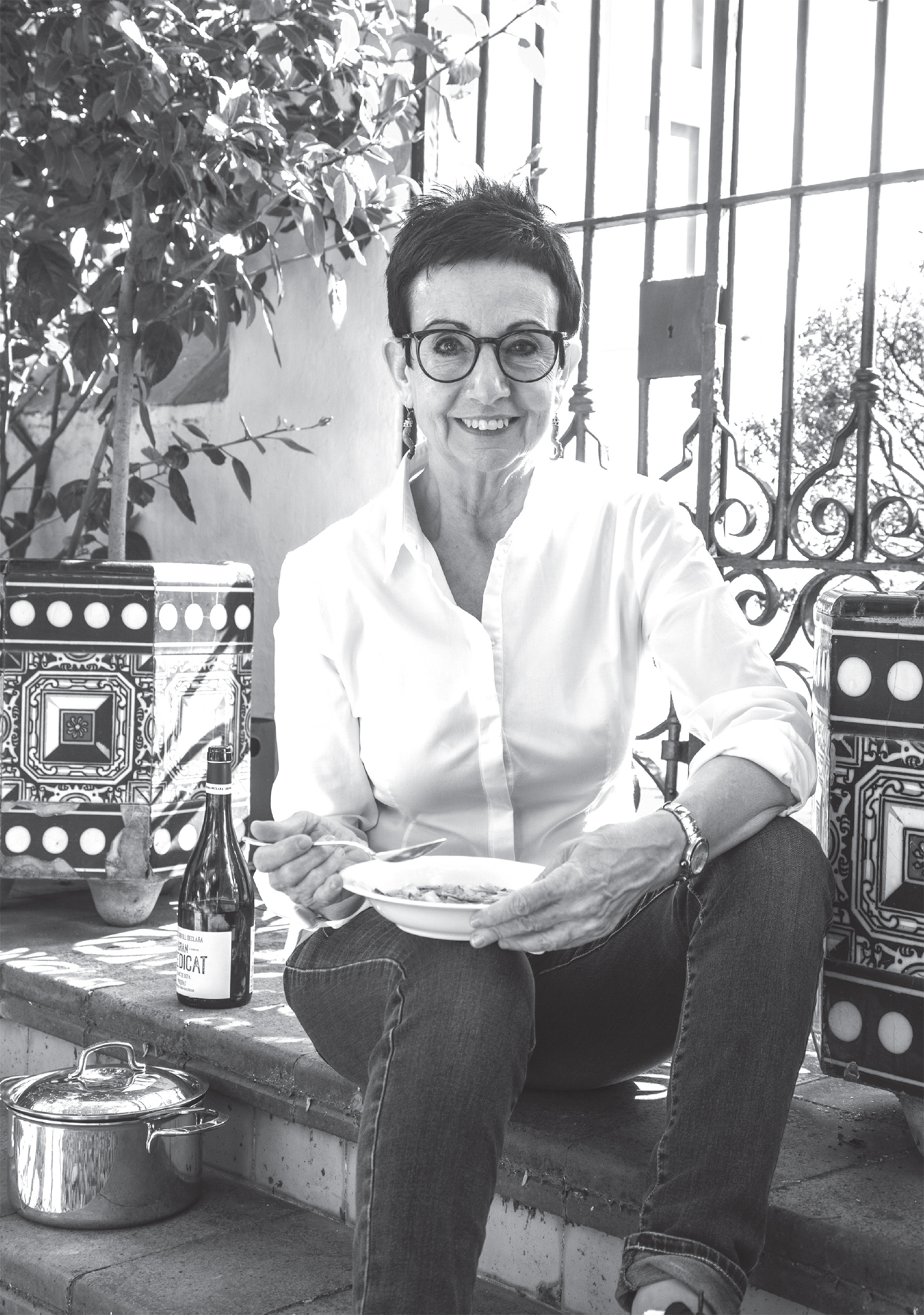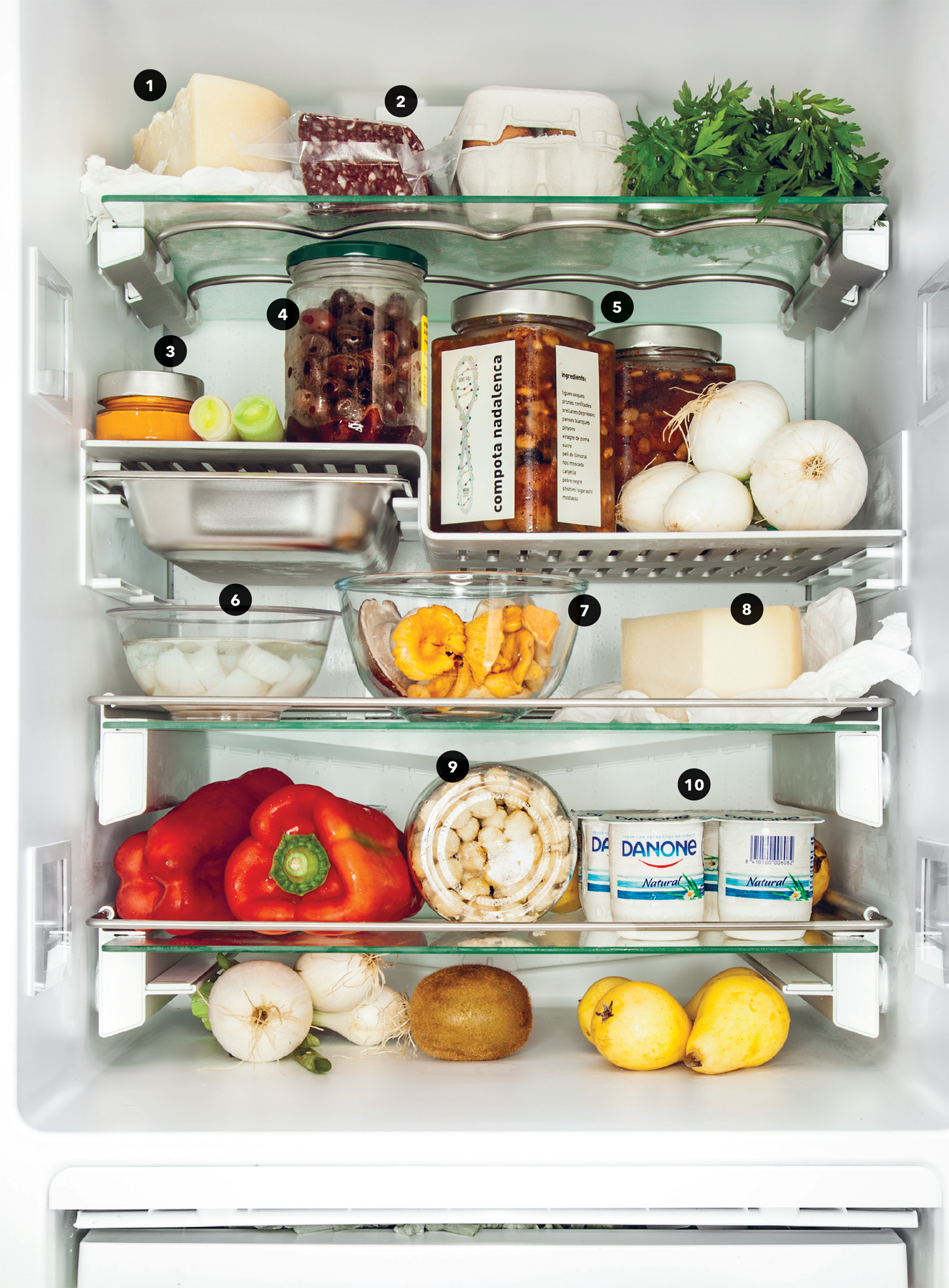
CURRENT HOMETOWN: Sant Pol de Mar, Spain
RESTAURANT THAT MADE HER NAME: Sant Pau, Sant Pol de Mar
SIGNATURE STYLE: Modern Catalan with Asian influences
BEST KNOWN FOR: Being the only female chef to be awarded seven Michelin stars between her three restaurants—San Pau (now closed); San Pau, Tokyo; and Moments in Barcelona
FRIDGE: Gaggenau
When I was growing up, they didn’t ask little girls what they wanted to be, but I knew I was destined to be an artist,” says the Catalan chef Carme Ruscalleda. Looking for something to do with her hands, she started helping out in the kitchen at twelve, boiling vegetables and making escudella, a rustic local soup with rice and pasta. Sometimes she’d make cookies, crema catalana, and other sweet inventions while no one was looking.
Despite having so much fun in the kitchen, she never really considered a culinary career. She studied business because her parents were grocery store owners and, afterward, charcuterie making. After she married Toni Balam, the two of them took over her parents’ store. There she stocked nontraditional herbs like lesser known varieties of thyme on the shelves and added spices to the cold cuts and blood sausages; her charcuterie soon became the talk of the town. She also began tearing through cookbooks, ambitiously testing all the recipes she could—eating, tasting, and exploring anything to do with food. New dishes such as fresh pasta and croquettes were added to the menu, and their grocery shop soon became a popular place to eat.
When the run-down villa just across the road became vacant, they bought the building and created Sant Pau. At first they served classic Catalan platillos (small shared dishes) of cheeses and local meats. But soon they were serving seafood and stews. Her confidence grew and she perfected her skills. “I wanted to do the highest quality cooking: a light, modern cuisine with personality,” she recalls.
The dining room with its small garden overlooking the Mediterranean Sea, close enough to smell the salty air, added a fairy-tale dimension, as did the fantastic menu. Dishes quickly evolved—deceptively normal-looking fried parrotfish surprised the taste buds with licorice and curry, for example—as did Ruscalleda’s presentations: a mini wooden crate brought to the table revealed a tiny masterpiece of cod brandade and black olives that mimicked a Mondrian painting.
The artistic plating and smaller portions were a new idea, and locals and critics alike panned the new venture. “There’s nothing on the plate, but everything on the bill,” Ruscalleda was once told. But she remained steadfast, and soon received accolades, drawing customers from all over to her tiny corner of Catalonia. And although the first ten years “were like crossing a desert,” her highly personalized melding of traditional Catalan cooking and global influences brought her culinary fame.
Sant Pau closed in 2018, but she has two more restaurants, in Tokyo and Barcelona, also run by family members, and there are plans for pop-ups. She still lives across the road from the original Sant Pau. From the small terrace of her spotless, stainless-steel kitchen you can catch a sliver of the sea. That fits her culinary philosophy perfectly: “A cook is an explorer and should use what they learn however they wish. Cooking the same dishes as my ancestors through a modern lens and respecting the culture of this, my place, is my everything,” she explains.

- IDIAZABAL RAW MILK CATALAN CHEESE—“I eat this for dessert.”
- HOMEMADE BLACK PUDDING—“I add this to many vegetable dishes but I also eat it with omelets and for simple sandwiches that we make for breakfast or dinner with bread and tomato.”
- HOMEMADE SALSA ROMESCO—“I always have it in the fridge. It can be eaten on toast, with meat or fish, or in a soup.”
- BLACK OLIVES
- DRIED FRUIT CONFITURE—“The dried fruit has vinegared nuts. I use them for appetizers or in a sauce for meat or even for dessert.”
- CHOPPED COD IN WATER
- MUSHROOMS
- SUAU DE CLÚA CHEESE
- AUSTRALIAN MACADAMIA NUTS—“I buy them from a Barcelona artisan toaster that makes them with a unique smoked touch.”
- DANONE NATURAL YOGURTS—“I eat one for breakfast every morning with chia and at night sometimes I eat one with grated pear.”
Q & A
Do you often eat at home? Even though the restaurant was just across the street, I always dined at home, and I eat mostly the same dishes. It could be a simple lentil stew, or local white beans with fish, or just a black pudding sausage.
Do you cook for friends and family? Normally, I just cook for my husband and myself. But if we have a little time off, we’ll go with friends to a little spot of land we own overlooking the sea and have a nice barbecue or we’ll make Catalan-style rice, my favorite! We’ll make it with shrimp, mussels, and squid, maybe a bit of rabbit sausage, and just simmer it all down in a broth with tomatoes, onions, and mushrooms if they’re in season. It’s the ultimate surf and turf!
It doesn’t seem like there are any markets in town. Where do you buy your produce? The market comes to me. This is a fishing village. There isn’t really a market, more like small producers who deliver to your home, or sell their wares in specialty shops and bodegas. Sometimes we go directly to the boats when they come up on the beach with their daily catch. The local red prawns are some of the best in the world.
Are there any other interesting local products? Oh yes! Sant Pol de Mar is located in El Maresme, a region with very impressive vegetables and fruits and very delicious seafood. My favorites are the peas and the strawberries. In the restaurant all the dishes cooked with those ingredients were usually more elaborate, but at home I always go with more simple recipes.
I see some unfamiliar beige stuff in a jar. Is it cheese? Yes, it’s called tupí, a local alcohol-infused condiment made with sheep, goat, or cow cheese. It has a strong character, with notes of anise and brandy liqueur. Tupí has many uses: It can be eaten as a fast dinner on a toast with a salad or it can be cooked as a sauce for meat or fish or as a dessert. I always make my own.
You have a few Japanese condiments in there as well. Yes, I have some red miso from Japan and some good soy, I think. The Catalan and Japanese people are similar in many ways. Both cultures respect seasonal produce, but they also like the sweet, salty, and spicy like us, and they love textures. Their condiments create amazing umami.
Do you like spicy food or sauces? There are none in your refrigerator. I do not use elaborate sauces; I like freshness and dishes served at the moment. But I do like black and white pepper and hot, spicy dried chilies.
And there’s no junk food. I never eat junk food. But if junk food exists it’s because there is a market for it. It’s our fault because we buy it. If no one buys it anymore, they will change their ways. I understand, though—home cooking is good and healthy, but people don’t have time anymore.